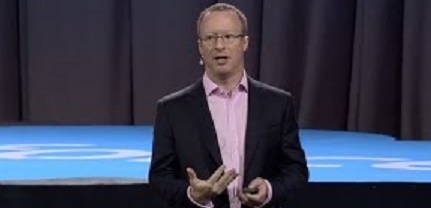
By Simon Mulcahy, Senior Vice President, Financial Services, Salesforce
The reality is that new mobile and digital 100% financial institutions, such as Banco Original or Nubank, are already a reality. Loans, investments, payments, money transfers, insurance and financial advice are in the sights of the winds of change. And they are not just targets of the FinTech army. Apple, Facebook, Google, Uber and other technology players are clearly participating in the game. Even supermarkets are in this battle, as are telecommunications companies, as can be seen from Orange's recent offer for Groupama Banque.
But what risk does this pose to the results of traditional banks? The McKinsey consultancy says that by 2025, 10% to 40% of these banks' revenues will be at risk. This indicates that the banking sector must pay attention to the evolution of customer expectations, which are driven by the same technology that is changing the competitive landscape.
A practical example: before, the account holder made sporadic visits to check the balance of his accounts, even today, he started to log in daily on mobile applications. Today's reality is that the bank is in your pocket - and customers' expectations are based on the experiences they have been having in retail. Consumers want simplicity, they want to use banking services however they want, whether through an application, at an ATM or at an agency. They want the bank to know them. They expect that all the data they provide will be reverted in value to them. And traditional banks already know that.
Despite all this revolution, we believe that banks have a great opportunity there, as they have millions of customers, extraordinary amounts of data and many channels. They know their customers and if they manage to achieve large-scale personalization in each interaction with them, the game is won. How could they, however, do this?
1. Think in terms of experiences and not in terms of products
The customer is always a click away from choosing a payment method or loan from the competitor. Every bad service experience decreases your loyalty. The key to promoting loyalty is to offer effortless experiences at each point of contact with the customer. Banks need to proactively reach the customer when there is a problem with the service; make the customer's life easier when he changes channels; make customer adherence a super fast process; end the complicated experiences of automated telephone answering; pre-approve certain offers to customers, reducing waiting times; and, finally, providing employees with a unique view of the customer, so that they can represent the bank in a more complete way.
2. Build an engagement layer
Almost every major banking technology is designed for a product-centric world that celebrates “build and they will come” thinking. Only this is in the past. Banks need to build a “layer of engagement” that provides a unified view of the customer for the bank's systems and employees. And it needs to be in the cloud, with priority for Application Programming Interfaces (English API) and mobile devices, and be very flexible. Otherwise, it will be just another system or tool that employees and customers need to log in unwillingly.
3. Deliver high-precision banking services
Engage each customer through everything you know about him in real time or almost in real time. Deliver personal and contextual messages, notices, offers and advice through the most appropriate device, at the most relevant time. On a large scale. Banks do this by aggregating information from various sources and connecting everything to carefully designed journeys and a real-time decision engine.
4. Be agile
The pace of business is accelerating. Banks need to be able to gather customer feedback and react to it faster than the competition. Applications are critical to strengthening responsiveness, but if they want to be effective, they cannot go through the traditionally long development life cycles. A recent study by CSC and Finextra with 74 financial institutions shows that 45% of them take more than six months to build a mobile app. Worse, in almost a quarter of them (22%), this process takes more than a year. A smart approach that can improve response time is to build applications by business analysts with a closer proximity to the customer.
5. Partner
Technology companies have acted as suppliers to the sector, selling one-off products, be it fundamental banking services or call center software. The best banks bring their technology suppliers closer, making them part of the team. This proximity benefits both sides, allowing for a cross-fertilization of knowledge, ideas and needs. In this new world, banks fail when they try to walk alone.
6. Become a single bank
The customer sees only one bank and has no patience for operational and process silos. For example, when a customer makes a high-value deposit, not automatically receiving tax-free savings offers is a missed opportunity. The benefits are clear: a customer using four financial products generates 730% more revenue, on average, than the customer with just a single product.
Despite pressure from non-traditional banks, regulatory agencies and customers themselves, not everything is a disgrace for retail banks in 2016. Technology-savvy banks are already starting to move towards high-precision banking. With this, they will not only gain customers, but will also have priority in choosing the disgruntled banking talents that exist in the market today. And the one who wins the most with this revolution is the customer.












